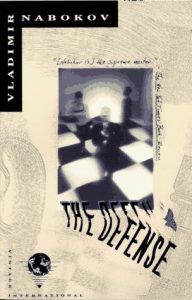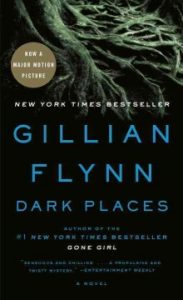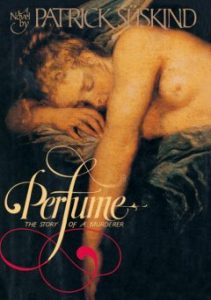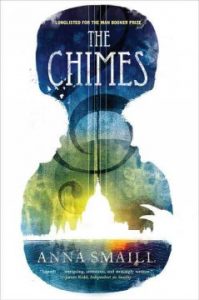Apropos of nothing, I learned this week that the colorful mantis shrimp has twelve color receptors in its impressively enormous eyes, which is four times more than humans have. It also attacks by punching its prey so hard and so fast that it can create underwater shock waves. It doesn’t seem fair at first for one crustacean to be so awesome, but the truth is that the mantis shrimp’s shrimp-brain takes in visual information differently that ours–which also means that it doesn’t “see colors” in the same way that we do (there are scientists who gave these shrimp color tests. No, seriously).

But learning about this feisty little coral reef dweller got me thinking about what it would be like to see through another set of eyes, and to perceive colors differently, since scientists now believe that humans don’t all see the same colors in the same way.
…And do you know what a phenomenal way to experience the sight–and indeed, sound, smell, taste, and touch–of another person is? Through books!
(Think about who is asking the questions here–that was kind of an easy one, really….)
But, in all seriousness, one of the things I love about literature is the opportunity it provides to see the world through a new pair of eyes; to try food that I would otherwise never have tasted; to hear music through someone else’s ears, with someone else’s understanding and someone else’s memories to interpret that sensory input in a new way. In this way, books can be so much more than escapes or entertainment–they can actually allow you to live a new life for a little while. And that kind of experience can stay with you, and transform the way you perceive the world around you and interact with your own senses.
Now, just like everyone sees color a little differently, every book is going to affect an individual reader in a different way. But since we are talking about senses, I thought I might give you a brief list of my favorite examples of what we’re going to call “sensory literature”–those books that spoke deeply to my senses of taste,touch, sight, smell, and hearing, in the hopes that they might inspire you, too!
Taste:
 The Historian: I don’t care that this is supposed to be about a twentieth-century hunt for Dracula, and a young girl’s coming of age. The truth of the matter is that this book made me hungrier than quite possibly any other book I have ever read (and I am including Charlie and the Chocolate Factory in that category). Perhaps it is because Kostova is so focused on the idea of the vampire that every item her characters consume become of monumental importance; maybe the idea is indeed to stir an insatiable hunger in the reader to help them understand what drives not only Vlad the Impaler through the centuries, but also the intrepid academics who pursue him around the world across three separate narratives. I’m not sure. What I do know is that, by page thirty, I had read descriptions of fresh-baked bread and chocolate that made me think that I had never actually eaten bread or chocolate before that moment in time. And as these brave intellectuals cross continents, they are treated to local dishes, regional treats, and rare delicacies that had my mouth watering. This is an engaging, thoughtful, and intriguing book–but please, for your own sake, bring a snack with you when you read it.
The Historian: I don’t care that this is supposed to be about a twentieth-century hunt for Dracula, and a young girl’s coming of age. The truth of the matter is that this book made me hungrier than quite possibly any other book I have ever read (and I am including Charlie and the Chocolate Factory in that category). Perhaps it is because Kostova is so focused on the idea of the vampire that every item her characters consume become of monumental importance; maybe the idea is indeed to stir an insatiable hunger in the reader to help them understand what drives not only Vlad the Impaler through the centuries, but also the intrepid academics who pursue him around the world across three separate narratives. I’m not sure. What I do know is that, by page thirty, I had read descriptions of fresh-baked bread and chocolate that made me think that I had never actually eaten bread or chocolate before that moment in time. And as these brave intellectuals cross continents, they are treated to local dishes, regional treats, and rare delicacies that had my mouth watering. This is an engaging, thoughtful, and intriguing book–but please, for your own sake, bring a snack with you when you read it.
Sight:
 The Defense: Vladimir Nabokov lived his life with grapheme-color synesthesia, a phenomenon in which, letters or numbers are perceived by the brain as inherently colored. He described his perception to the BBC in 1962 thusly: “V is a kind of pale, transparent pink: I think it’s called, technically, quartz pink: this is one of the closest colors that I can connect with the V. And the N, on the other hand, is a greyish-yellowish oatmeal color.” He also heard color, explaining that “The long “a” of the English alphabet has for me the tint of weathered wood, but a French “a” evokes polished ebony..” As a result, Nabokov’s work is full of rich color and sensory detail that makes each scene come alive in a kind of hallucinogenic way, as if some incredible filter had been put over whatever instance of daily life he described. You get this is spades in Lolita, but The Defense, Nabokov’s third book, was the first one that I read, and thus, the one that taught me how to see through his remarkable eyes. The story of a doomed, genius chess-player is, in itself, haunting and touching and surprisingly romantic, but it is the way Nabokov describes Luzhin’s world that made this book one of my all-time favorites. I dare you to read this book and not find chess boards and chess pieces in every shadow that passes by.
The Defense: Vladimir Nabokov lived his life with grapheme-color synesthesia, a phenomenon in which, letters or numbers are perceived by the brain as inherently colored. He described his perception to the BBC in 1962 thusly: “V is a kind of pale, transparent pink: I think it’s called, technically, quartz pink: this is one of the closest colors that I can connect with the V. And the N, on the other hand, is a greyish-yellowish oatmeal color.” He also heard color, explaining that “The long “a” of the English alphabet has for me the tint of weathered wood, but a French “a” evokes polished ebony..” As a result, Nabokov’s work is full of rich color and sensory detail that makes each scene come alive in a kind of hallucinogenic way, as if some incredible filter had been put over whatever instance of daily life he described. You get this is spades in Lolita, but The Defense, Nabokov’s third book, was the first one that I read, and thus, the one that taught me how to see through his remarkable eyes. The story of a doomed, genius chess-player is, in itself, haunting and touching and surprisingly romantic, but it is the way Nabokov describes Luzhin’s world that made this book one of my all-time favorites. I dare you to read this book and not find chess boards and chess pieces in every shadow that passes by.
Touch:
 Dark Places: This is a bit of a tricky category, since ‘touch’ and ‘feeling’ can include so many different sensations, but, for my money, few writers can pull off a sense of physically being in a space, and enduring all the sensations that involves, better than Gillian Flynn. It was a toss-up between this book and her debut, Sharp Objects, but I enjoyed Dark Places much more, so we’re going to talk about that one. A fascinating novel that plays with time and memory, grief and guilt in really interesting ways, this book focuses on Libby Day, the only member of her family to survive a gruesome murder. Her brother was imprisoned for the crime, but, short on funds and utterly adrift in life, Libby accepts a commission from a local crime club to investigate the case again. Though the story itself is fascinating, Flynn is a marvel at creating immersive details–in this case, the book takes place in an economically dead area of Kansas (matching Libby’s own emotional state more often than not), from shady strip clubs to run-down restaurants to the homes of her friends and family. There were a number of times while reading this book that I wanted to (and did) wash my hands, because the scenes felt so real that I felt encased with their grime. It’s those kind of details that make this book so realistic, and keeps the mystery and suspense of the plot so incredibly gripping.
Dark Places: This is a bit of a tricky category, since ‘touch’ and ‘feeling’ can include so many different sensations, but, for my money, few writers can pull off a sense of physically being in a space, and enduring all the sensations that involves, better than Gillian Flynn. It was a toss-up between this book and her debut, Sharp Objects, but I enjoyed Dark Places much more, so we’re going to talk about that one. A fascinating novel that plays with time and memory, grief and guilt in really interesting ways, this book focuses on Libby Day, the only member of her family to survive a gruesome murder. Her brother was imprisoned for the crime, but, short on funds and utterly adrift in life, Libby accepts a commission from a local crime club to investigate the case again. Though the story itself is fascinating, Flynn is a marvel at creating immersive details–in this case, the book takes place in an economically dead area of Kansas (matching Libby’s own emotional state more often than not), from shady strip clubs to run-down restaurants to the homes of her friends and family. There were a number of times while reading this book that I wanted to (and did) wash my hands, because the scenes felt so real that I felt encased with their grime. It’s those kind of details that make this book so realistic, and keeps the mystery and suspense of the plot so incredibly gripping.
Smell:
 Perfume, the Story of a Murderer: When it first hit the English-speaking market, Patrick Süskind’s novel about an 18th-century French orphan who is born with an exceptional sense of smell received the highest price ever paid for a novel in translation–before it even had a translator. When you read it, however, it’s easy to understand why (and to see just what miracles a good translator can perform). Süskind literally creates smell-scapes in his book describing Jean-Baptiste Grenouille’s world through his remarkable olfactory perception. As we delve deeper and deeper into his twisted world, it becomes more and more easy to justify the horrid things Grenouille does in order to capture the perfect, illusive scent, because the reader is so captivated that his hunger–and the hunger of those who crave what he can do–is so real that it is impossible to turn away. What is really incredible about this book is the fact that I have no idea what many of the items mention in this book smell like. But I know I love or hate them because of the way Süskind brings each scent to life, and complicates the world of his book with scents, as well as morals.
Perfume, the Story of a Murderer: When it first hit the English-speaking market, Patrick Süskind’s novel about an 18th-century French orphan who is born with an exceptional sense of smell received the highest price ever paid for a novel in translation–before it even had a translator. When you read it, however, it’s easy to understand why (and to see just what miracles a good translator can perform). Süskind literally creates smell-scapes in his book describing Jean-Baptiste Grenouille’s world through his remarkable olfactory perception. As we delve deeper and deeper into his twisted world, it becomes more and more easy to justify the horrid things Grenouille does in order to capture the perfect, illusive scent, because the reader is so captivated that his hunger–and the hunger of those who crave what he can do–is so real that it is impossible to turn away. What is really incredible about this book is the fact that I have no idea what many of the items mention in this book smell like. But I know I love or hate them because of the way Süskind brings each scent to life, and complicates the world of his book with scents, as well as morals.
Hearing:

The Chimes: On the surface, Anna Smail’s book is a dystopian fantasy novel where the citizens of London are isolated and kept ignorant by the constant chimes played out to them. But in the midst of this strangely horrifying scenario rises a young orphan named Simon, who has managed to cling to a fundamentally important memory–he has to find someone. Along his way, he falls in with a group of ragamuffins who find a way to use music as a tool of revolution and freedom, in a world that has only, until now used it as a form of oppression. Because music is so fundamental to this plot, Smaill weaves musical expressions and dynamics into every exchange and description, creating a world that is more auditory than anything else. When she describes the sound of cheese melting, you can hear it, in a way that isn’t quite feasible in real life. The passion for music, and for sound in general, seeps through every word of this book, and is guaranteed to make your ears ring in the best of ways by the time it is through.
Until next time, dear readers–enjoy every detail!
